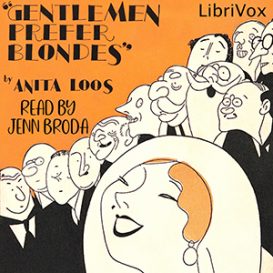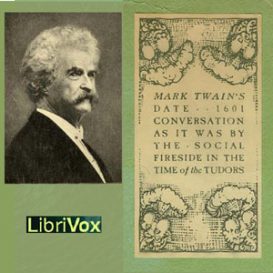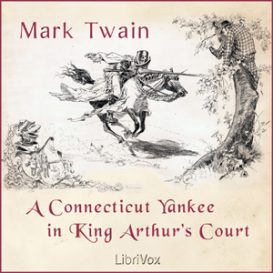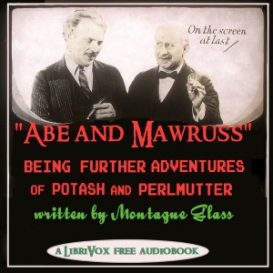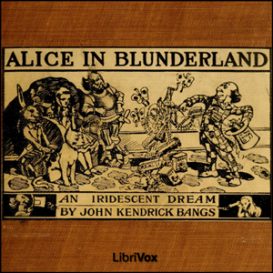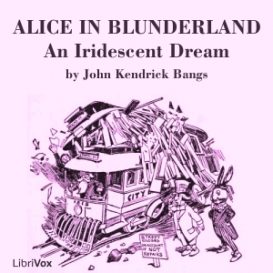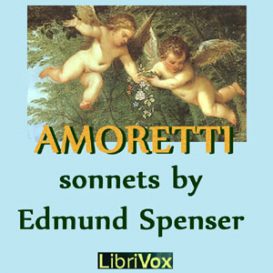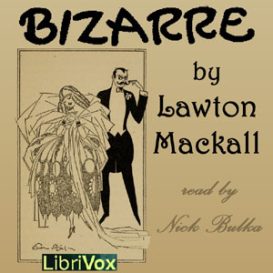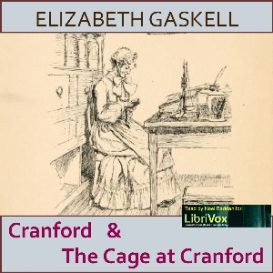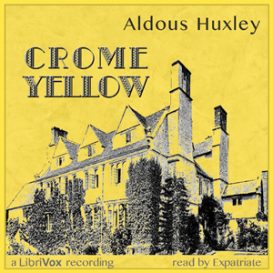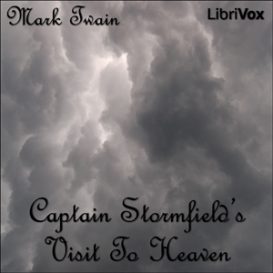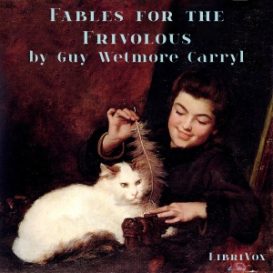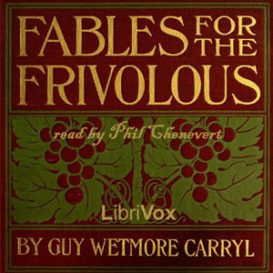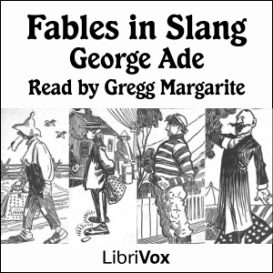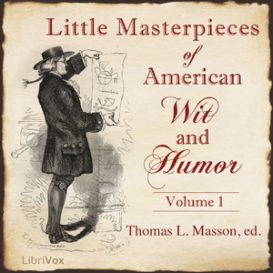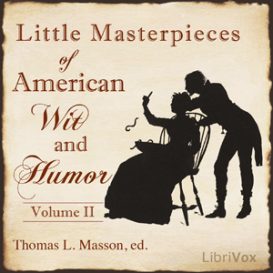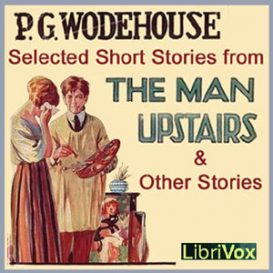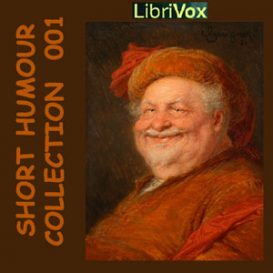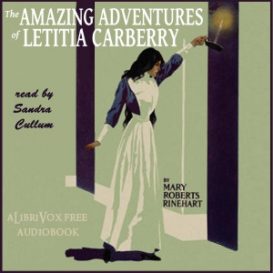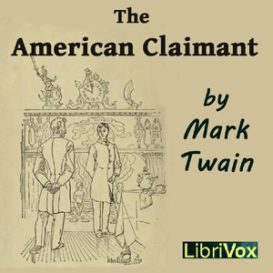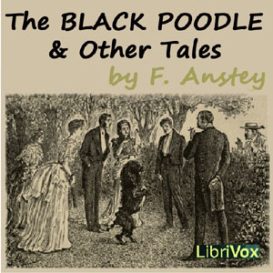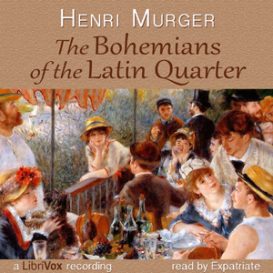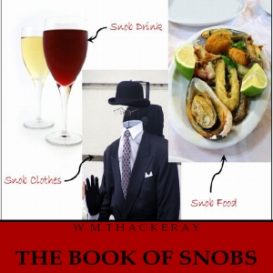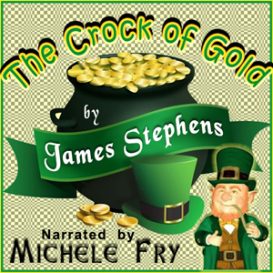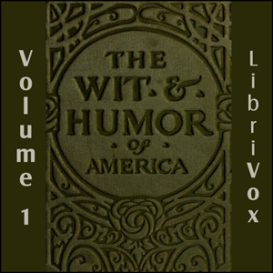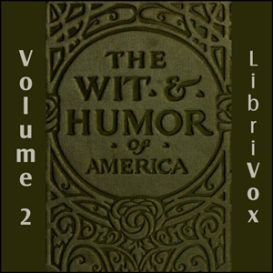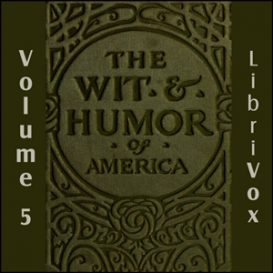Humorous Fiction
Showing 1–50 of 54 results
“Gentlemen Prefer Blondes”: the illuminating diary of a professional lady
In this comic novel written by American author Anita Loos, we follow the adventures of the fictional character Lorelei Lee who is a young blonde flapper. This story takes place in the hedonistic Jazz Age and is written in the form of a diary from Lorelei’s viewpoint as she shares stories of the men she entertains in New York City and Europe. ?Gentlemen Prefer Blondes? was an instant bestseller and has been declared as ?the great American novel? by Edith Wharton. – Summary by Jenn Broda
1601: Conversation, as it was by the Social Fireside, in the Time of the Tudors
Please note: this recording contains strong language. “1601,” wrote Mark Twain, “is a supposititious conversation which takes place in Queen Elizabeth’s closet in that year, between the Queen, Ben Jonson, Beaumont, Sir Walter Raleigh, the Duchess of Bilgewater, and one or two others … If there is a decent word findable in it, it is because I overlooked it.” 1601 depicts a highfalutin and earthy discussion between the Queen and her court about farting and a variety of sexual peccadillos, narrated disapprovingly and sanctimoniously by the Queen’s Cup-Bearer, an eyewitness at “the Social Fireside.” [Summary by Denny Sayers] Cast: Introduction ? Denny Sayers Narrator ? Jonathan Horniblow The Queen ? miette Beaumonte ? David Lawrence Lady Margery Boothy ? Kristin Hughes Lady Alice Dilberry, Ben Jonson, Lord Bacon ? Ruth Golding Lady Helen ? Philippa Sir Walter Ralegh ? Mark F. Smith Shaxpur ? Andy Minter
1601: Conversation, as it was by the Social Fireside, in the Time of the Tudors (Version 2)
Please note: this recording contains strong language. Also known simply as “1601”, this is a humorously risque work by Mark Twain, first published anonymously in 1880, and finally acknowledged by the author in 1906. (Summary by John Greenman & Wikipedia)
A Connecticut Yankee in King Arthur’s Court (version 2)
A Connecticut Yankee in King Arthur’s Court is an 1889 novel by American humorist and writer Mark Twain. The work is a very early example of time travel in literature, anticipating by six years H. G. Wells’ The Time Machine of 1895 (however, unlike Wells, Twain does not give any real explanation of his protagonist’s traveling in time). Some early editions are entitled A Yankee at the Court of King Arthur. (Summary by Wikipedia)
Abe and Mawruss: Being Further Adventures of Potash and Perlmutter
Montague Glass was a lawyer who eventually abandoned the practice of law to write full time. He wrote a series of stories in the New York Post about a pair of popular characters in the predominantly Jewish garment trade. Many of the plots were derived from trade problems he saw as a lawyer. This is the second book of the collected stories; his Potash and Perlmutter stories were also made into stage plays and even movies that were very popular in their time. – Summary by ToddHW
Adventures of Bindle
Jenkins’ most popular fictional creation was Mr. Joseph Bindle, who first appeared in a humorous novel in 1916 and in a number of sequels. In the preface to the books, T. P. O’Connor said that “Bindle is the greatest Cockney that has come into being through the medium of literature since Dickens wrote Pickwick Papers”. The stories are based on the comedic drama of life at work, at home and all the adventures that take place along the way. (Summary by Wikipedia)
Adventures of Huckleberry Finn (version 3)
The book is noted for its colorful description of people and places along the Mississippi River, and its sober and often scathing look at entrenched attitudes, particularly racism. The drifting journey of Huck and his friend Jim, a runaway slave, down the Mississippi River on their raft may be one of the most enduring images of escape and freedom in all of American literature. The book has been popular with young readers since its publication, and taken as a sequel to the comparatively innocuous The Adventures of Tom Sawyer. It has also been the continued object of study by serious literary critics. Although the Southern society it satirized was already a quarter-century in the past by the time of publication, the book immediately became controversial, and has remained so to this day.(Summary from Wikipedia)
Adventures of Huckleberry Finn (version 4)
Adventures of Huckleberry Finn (Tom Sawyer’s Comrade), often shortened to Huck Finn, is a novel written by Mark Twain and published in 1884. It is commonly regarded as one of the Great American Novels, and is one of the first major American novels written in the vernacular, characterized by local color regionalism. It is told in the first person by Huckleberry “Huck” Finn, best friend of Tom Sawyer and narrator of two other Twain novels. The book is noted for its colorful description of people and places along the Mississippi River. By satirizing a Southern antebellum society that was already anachronistic at the time, the book is an often scathing look at entrenched attitudes, particularly racism. The drifting journey of Huck and his friend Jim, a runaway slave, down the Mississippi River on their raft may be one of the most enduring images of escape and freedom in all of American literature. The book has been popular with young readers since its publication and is taken as a sequel to The Adventures of Tom Sawyer. It has also been the continued object of study by serious literary critics. The book was criticized upon release because of its coarse language, and became even more controversial in the 20th century because of its perceived use of racial stereotypes and because of its frequent use of the “N” racial slur. (Summary by Wikipedia)
Alice in Blunderland: an Iridescent Dream
From Alice in Blunderland: “Certain of our members claim that they have a right to sell their votes for $500 apiece–” “Mercy!” cried Alice, “Why, that is–that is terrible.” “It certainly is,” said the March Hare ruefully, it’s rotten. Here I’ve been holding out for $1,250 for mine, and these duffers want to go in for a cut rate that will absolutely ruin the business.” John Kendrick Bangs takes Carroll’s Alice in Wonderland and turns it into a political satire in many ways as fresh, keen and relevant today as it was a hundred years ago. (Summary by Ruth Golding)
Alice in Blunderland: an Iridescent Dream (version 2)
John Kendrick Bangs was an American author and satirist, and the creator of modern Bangasian Fantasy, the school of fantasy writing that sets the plot wholly or partially in the afterlife. (Wikipedia) Plot summary: J K Bangs has taken Alice from Lewis Carroll’s ?Alice in Wonderland? and lets her on a boring day travel with the Mad Hatter, the March Hare, the Cheshire Cat and the other of Carroll’s familiar characters to Blunderland. The story is a well written Satire, a witty, humorous tale of adventure and city politics, a tale of Alice in a land where nothing is as it should be. (Summary by Lars Rolander)
Amoretti: A sonnet sequence
The Amoretti (meaning little love poems) is a sequence of 89 sonnets written in the tradition of the Petrarchan sonnets, a popular form for poets of the Renaissance period. Spenser?s sequence has been largely neglected in modern times, while those of his contemporaries William Shakespeare and Sir Philip Sidney have been acclaimed. However, because of the artistic skill, along with the emotion and the humor exhibited, these poems deserve a broader hearing, even though they may be somewhat difficult for the present-day reader, partly through Spenser?s love for words and expressions that were already archaic in his time. Amoretti, written throughout the year 1594 and published the following year, violates at least one of the conventional elements of the Renaissance sonnet sequences. Other poets, including Petrarch and Sidney, chose as the inspiration for their sonnets a woman who was inaccessible to the poet, sometimes even married to someone else. They idealized this woman, seeming to be extravagantly suffering because of their passionate admiration, while in real life they might hardly know the lady and had no real interest in an actual love affair. Spenser, however, dedicated his verses to a woman that he actually loved and sought, Elizabeth Boyle, whom he then married. Also the sonnet series by other poets were usually despairing of any fruition in regard to the lady, and Spenser certainly does show much frustration himself in his efforts to achieve a closer relationship with his love; but as the series progresses, he gradually sees improvement in the success of his wooing, as his actual wedding nears. The poems feature elaborate imagery, loaded with metaphorical situations, saying much the same thing repeatedly in a wide variety of ways, with much clever creativity, sometimes impressive and sometimes a bit awkward. There is a rich vein of humor running through the whole sequence, often through mock passion, and there is even a bit of sensuality in some of the later sonnets. The better poems are often sharp and crystalline, sparkling in their freshness and originality. (Introduction by Leonard Wilson)
An Amiable Charlatan
An Englishman is enjoying his dinner at Stephano’s, at which he is a regular diner. A man enters quickly, sits at his table, starts eating his food, and hands him a packet underneath the table! So begins Paul Walmsley’s acquaintance – and adventures – with American adventurer Joseph H. Parker and his lovely daughter, Eve. (Intro by TriciaG) Note that there is an alternate reading of section 8. Both are excellent renditions, so enjoy either or both of them.
Bizarre
A series of essays offering a humorous look at commonplace items and occurrences. (Summary by Nick Bulka)
Cranford (version 2)
Cranford is set in a small market town populated largely by a number of respectable ladies. It tells of their secrets and foibles, their gossip and their romances as they face the challenges of dealing with new inhabitants to their society and innovations to their settled existence. It was first published between 1851 and 1853 as episodes in Charles Dickens? Journal Household Words. Appended to this recording is a short sequel, The Cage at Cranford, written ten years later and published in the journal All the Year Round. In a letter to Mrs. Gaskell, Charlotte Bronte wrote: ?Thank you for your letter, it was as pleasant as a quiet chat, as welcome as spring showers, as reviving as a friend?s visit; in short, it was very like a page of Cranford.?… Cranford is a genteel and humorous look at Victorian society by Elizabeth Gaskell, and is quite a change from her more gritty novels like Mary Barton or North and South. (Summary by Noel Badrian)
Crome Yellow, Version 2
Fascinating and brilliant at many levels, Huxley’s spoof of Lady Ottoline Morrell’s famous bohemian gatherings is difficult to categorize. The ironic tone and caricaturish rendering of some characters makes it partly entertaining satire, but intertwined with the irony are a very human love story and much poignant social commentary. Denis Stone (Huxley himself) is a young poet hopelessly enamored of the languid Anne Wimbush, who comes to Priscilla Wimbush’s Crome estate for several weeks of intellectual and artistic escape. Along the way of his love affair, he engages in or eavesdrops upon conversations with other guests about the War, about eschatology, about future society, about Sex, about Art, about Love. Several of these dialogues directly foreshadow themes of Huxley’s later dystopian masterpiece, Brave New World. Others show a tragic prescience of another great European war on its way, an awareness that future tragedy might attempt to complete the unfinished business of the recent Great War. Huxley’s first novel, Crome Yellow is well worth reading in its own right, while containing embryonic forms of so much of Huxley’s later intellectual themes. – Summary by Expatriate
Extract from Captain Stormfield?s Visit to Heaven (version 4)
Mark Twain pokes a little good natured fun at the usual concept of heaven. The story follows Captain Elias Stormfield on his extremely long cosmic journey to heaven; his accidental misplacement; his short-lived interest in singing and playing the harp (generated by his preconceptions of heaven); and the obsession of souls with the “celebrities” of heaven, like Adam and Moses, who according to Twain become as distant to most people in heaven as living celebrities are on Earth. Twain uses this story to show his view that the common conception of heaven is ludicrous and points out the incongruities of such beliefs.Lots of his usual barbed humor here. – Summary by phil chenevert and wikipedia
Extract from Captain Stormfield’s Visit to Heaven
“Captain Stormfield’s Visit to Heaven” is a short-story written by American writer Mark Twain and published in 1909. The story follows Captain Stormfield on his extremely long cosmic journey to heaven, his accidental misplacement, his short-lived interest in singing and playing the harp, and the obsession of souls with the “celebrities” of heaven, like Adam and Moses, whom, according to Twain, become as distant to most people in heaven as living celebrities are on Earth. Twain uses this story to show his view that the common conception of heaven is ludicrous and points out the incongruities of such beliefs. (from Wikipedia)
Extract from Captain Stormfield’s Visit To Heaven (version 2)
In the afterlife grizzled sea captain Eli Stormfield finds himself piloting a ship to heaven. Despite a detour and some navigation errors he arrives but finds the transition to heavenly bliss a little disconcerting. ? Although first drafted in the late 1870?s this story did not see print until the December 1907 and January 1908 issues of ?Harper?s Magazine?. The next year it was made available as a Christmas gift book and represents the last volume Mark Twain published in his lifetime. (Summary by Gregg Margarite)
Fables for the Frivolous (Version 2)
Fables for the Frivolous is one of the earliest works by the American parodist Guy Wetmore Carryl. These fables are adapted from Jean de La Fontaine’s original writings. The Aesop-style fables are written in verse, and are light-hearted re-tellings of fables from two centuries before, each ending with a moral and a pun. Among the more celebrated of the fables are The Persevering Tortoise and the Pretentious Hare, The Arrogant Frog and the Superior Bull, and The Sycophantic Fox and the Gullible Raven. (from Wikipedia)
Fables in Slang
While a columnist for The Chicago Record humorist George Ade penned numerous ?fables? which were subsequently collected into books. Fables in Slang is the first of these collections. It contains 26 satirical stories that lampoon phrenologists, idealists, snobs, fanatics and other ignorant fools of the day, most of which still wander through our modern lives. Jean Shepherd considered Ade a predecessor who made writers like James Thurber, Mike Royko, and himself possible. Fables in Slang was first published in 1899 by Herbert S. Stone and Company. (Summary by Gregg Margarite)
Faces and Places
Faces and Places is a collection of articles on nineteenth century travel, events and personalities by the British journalist Henry Lucy, who wrote for the Daily News, a London newspaper. His open letter To Those About to Become Journalists rings as true today as when it was written. The first article, “Fred” Burnaby, includes a lively account of a balloon trip, while Night and Day on the Cars in Canada and Easter on Les Avants relate Lucy’s experiences of rail travel at that time. Other travel tales (A Night on a Mountain, Mosquitoes and Monaco, and Oysters and Arcachon) provide an insight into the Victorian Englishman’s attitude to Europe. Three of the pieces, With Peggotty and Ham, A Cinque Port and Christmas Eve at Watts’s, concern the county of Kent, where Lucy had a country house. Christmas Eve at Watts’s contains an interesting expos? of Dickens’ short story The Seven Poor Travellers. Other articles are of historical interest: A Wreck in the North Sea is an account of the wreck of the ship “Deutschland” in 1875; A Historic Crowd describes the massive popular interest in the 1871 trial of the Tichborne Claimant; The Battle of Merthyr contains an eye-witness account of the Merthyr Riots of 1831; The Prince of Wales paints a portrait of the future King Edward VII. Lucy, who also wrote as “Toby, M.P.” for the satirical magazine Punch, loved to poke gentle fun, particularly at the establishment, and this is especially evident in A Peep at an Old House of Commons and Some Preachers I Have Known. This eclectic collection, mostly affectionately humorous, but with moments of great pathos, was originally published in 1892 in The Whitefriars Library of Wit & Humour.(Summary by Ruth Golding)
Humour of the North
Some day an enterprising editor may find time to glean from the whole field of Canadian literature a representative collection of wit and humour. . . . The present little collection obviously makes no such ambitious claim. It embraces, however, what are believed to be representative examples of the work of some of our better-known writers, many of which will no doubt be quite familiar to Canadian readers, but perhaps none the less welcome on that account. (Summary from the Introduction)
Little Masterpieces of American Wit and Humor Vol 1
Volume 1 of a ten volume collection of amusing tales, observations and anecdotes by America’s greatest wordsmiths. This work includes selections by such household favorites as Mark Twain, Oliver Wendell Holmes, Benjamin Franklin and Washington Irving. – Summary by Lynne Thompson
Selected Short Stories
A miscellaneous collection of short stories, not featuring any of Wodehouse’s regular characters, most concern love and romance and, being Wodehouse, all are amusing.(Summary by Wikipedia)
The Adventures of a Suburbanite
Why is the neighbor so obsessed with his car? Where can we find a good gardener? Should we have a Santa Claus at our Christmas party? Yes, this is suburbia… much the same today as it was in 1911. – Summary by Sarah Jennings
The Adventures of Huckleberry Finn (Dramatic Reading)
In order to escape his cruel father, and led by a thirst for adventure, Huck Finn sets off down the Mississippi River with Jim, an escaped slave. But trouble is never far behind them, and their adventures are only beginning when they meet up with two men who claim to be a duke and a king! And that?s before Jim gets captured by none other than Tom Sawyer?s aunt and uncle? who mistake Huck for Tom. The hilarious adventures and scrapes of Huck, Jim, Tom, and others are brought to life in this dramatic reading. – Summary by Rachel Cast Huckleberry Finn: Patrick Saville Tom Sawyer: Ashur Gharavi Jim: Oxenhandler The Duke of Bridgewater: Edward Kirkby The King: Zames Curran Uncle Silas: Evan Zeiger Aunt Sally: Kristin Gjerl?w Various other roles read by: Zames Curran, KHand, Ashur Gharavi, John Burlinson, K. Adrian Stroet, Donald Cummings, Willy, Larry Wilson, Joseph Tabler, Soumen Barua, Rachel, Twinkle, Availle Edited by: linny Proof listeners: Donald Cummings, Rachel, Nadiezda, Tawnya Roy, Zames Curran
The Adventures of Sally
This romantic comedy stars a young American girl named Sally, who inherits a considerable fortune and finds her life turned upside down. The typically Wodehouseian cast includes Sally’s ambitious brother, an assortment of theater people, a pair of English cousins, and, of course, an Uncle. It’s jolly good fun! (Summary by Kara and Wikipedia)
The Adventures of the Eleven Cuff-Buttons
The Adventures of the Eleven Cuff-Buttons: Being one of the Exciting Episodes in the Career of the Famous Detective Hemlock Holmes as Recorded by his Friend Dr. Watson is a parody of the Sherlock Holmes stories. “…there in the same old den, at 221-B Baker Street, in the city of London, we were domiciled on that eventful April morning in 1912 that saw us introduced to what turned out to be positively the dog-gonedest, most mixed-up, perplexing, and mysterious case we ever bumped up against in all our long and varied career in Arthur Conan Doyle’s dream-pipe. It completely laid over “The Sign of the Four” and “The Study in Scarlet,” and had “The Adventure of the Blue Carbuncle” all beaten to a frazzle.” That case is hereby related. – Summary by TriciaG & the author
The Amazing Adventures of Letitia Carberry
Letitia, Aggie and Lizzie are at it again, solving mysteries, getting into scrapes. Is there no end to the antics of these three spinster ladies? A murder at a hospital, reuniting lovers, a mangy dog or does it have fleas? The hilarious and often perilous adventures of Letitia Carberry. – Summary by Sandra More stories at LibriVox Tish: The Chronicle of Her Escapades and Excursions More Tish
The Amazons: A Farcical Romance
This 1895 farce inspired by the outlandish idea of women wearing pants, centers around the predicament of the three daughters of the eccentric Marchioness of Castlejordan, who determined to have sons, raised them like boys. She encouraged them to dress and act like boys at home, yet dress like ladies when out. As the girls come of age, they are conflicted. They want to please mother by acting as her sons, but, suddenly smitten with three gentlemen, they are compelled to grow up and be ladies. When their suitors secretly come to woo, they aren?t sure what to do??and what will mother do if she finds out? (Summary by A.L. Gramour) Cast Lady Castlejordan: Algy Pug Noeline: Elizabeth Klett Thomasin: Arielle Lipshaw Wilhelmina: Amy Gramour Reverend Roger Minchin/Andre de Grival: Lars Rolander Barrington Litterly: John Fricker Galfred Tweenwayes: Peter Bishop Sergeant Shuter: Liberty Stump Fitton/Youat/Orts: Levi Throckmorton Narrator: Malane Audio edited by Amy Gramour
The American Claimant
The American Claimant is an 1892 novel by American humorist and writer Mark Twain. The story focuses on the class differences and expectations of monarchic, hierarchical Britain and the upstart, “all men are created equal” America. Twain wrote the novel with the help of phonographic dictation, the first author (according to Twain himself) to do so. This was also (according to Twain) an attempt to write a book without mention of the weather, the first of its kind in fictitious literature. Indeed, all the weather is contained in an appendix, at the back of the book, which the reader is encouraged to turn to from time to time. (Summary by Wikipedia and John Greenman)
The Black Moth (version 2)
Jack Carstares, oldest son of the Earl Wyncham, has been disgraced by his brother. Gone for six years, living the life a highwayman he meets the woman he will fall in love with. Saving her from being kidnapped by a dastardly blackguard he is injured and must stay with her family until he is able to return to his life…will she discovery his true identity? Will he be able to leave her when the time comes? Mystery and humor follow this intriguing cast of characters until the very end. (Summary by Terra Mendoza
The Bohemians of the Latin Quarter
As much as any other work of literature, Henri Murger?s 1851 collection of witty sketches Sc?nes de la vie de boh?me shaped the later romanticized image of the bohemian artist: independent, insouciant, exuberantly lustful, devoted to Art for Art?s sake no matter how cold and hungry the artist might be. Four young Parisian artists, Schaunard the composer, Marcel the painter, Rodolphe the poet, and Colline the philosopher, form an informal Bohemian alliance dedicated to Art and the joy of Life. Pretty and faithless young mistresses come and go from their beds, most notably Mimi, Ph?mie, and Musette, while the young artists do their best to foil their creditors and feed their bellies on the way to artistic glory. Resisting the conforming forces of Success and Society is their greatest challenge, and in the end the question is: Does a time come at last to give up the joys of Bohemia? ( Expatriate)
The Book of Snobs
The necessity of a work on Snobs, demonstrated from History, and proved by felicitous illustrations:?I am the individual destined to write that work?My vocation is announced in terms of great eloquence?I show that the world has been gradually preparing itself for the WORK and the MAN?Snobs are to be studied like other objects of Natural Science, and are a part of the Beautiful (with a large B). They pervade all classes?Affecting instance of Colonel Snobley. (Summary excerpted from Prefatory Remarks from the book by W. M. Thackeray)
The Crock of Gold
This is a comic novel written by Irish author James Stephens, a quick-witted storyteller whose pantheistic philosophy is revealed in his adult Irish fairy tales. His first novel, The Charwoman’s Daughter (1911), humorously examines the life and fantasies of a poor Dublin mother and daughter. His second, The Crock of Gold (1913), again showcases his unique writing style, quirky thoughts, grasp of irony and cleverness of phrase. No conformity here, lots of head-scratching twists and turns that reveal odd bits of wisdom too! The main characters are an extremely pedantic Philosopher, his revengeful wife, their sweet innocent children lured down leprechaun holes, a teenage girl seduced by Pan (the god of lust and carefree living) then saved by Angus Og (the Irish god of youth, love and beauty), culminating in a giant parade of Irish gods. Stephen’s serious philosophy is on display here and there, and we learn many useful tips for dealing with fairies, goblins and gods, especially that no good comes of stealing a leprechaun’s crock of gold! ~Summary by Michele Fry
The Wit and Humor of America, Vol 01
The Wit and Humor of America is a 10 volume series. In this, the first volume, 53 short stories and poems have been gathered from 44 authors. This volume is sure to delight listeners. (Summary by Linette Geisel)
The Wit and Humor of America, Vol 02
The Wit and Humor of America is a 10 volume series. In this, the second volume, 44 short stories and poems have been gathered from 31 authors. This volume is sure to delight listeners. (Summary by Linette Geisel)) The Wit and Humor od America series was edited by American humorist Marshall Pinckney Wilder (1859 – 1915) (from Wikipedia)
The Wit and Humor of America, Vol 05
The Wit and Humor of America is a 10 volume series. In this, the fifth volume, 43 short stories and poems have been gathered from 32 authors. This volume is sure to delight listeners. (Summary by Linette Geisel)


